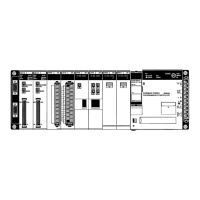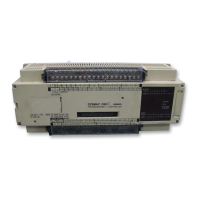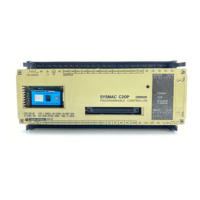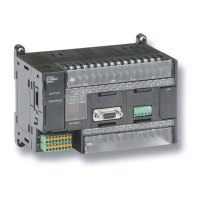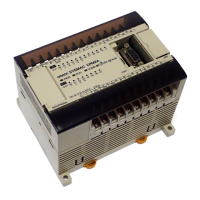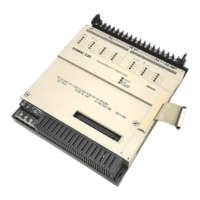189
16-bit to 4-bit encoder DMPX(77)
operates as a 16-bit to 4-bit encoder when the leftmost
digit of C is 0.
When
the execution condition is OFF
, DMPX(77) is
not executed. When the exe
-
cution
condition is ON, DMPX(77) determines the position
of the highest ON bit
in
S, encodes it into single-digit hexadecimal value corresponding to
the bit num
-
ber,
then transfers the hexadecimal value to the specified digit
in R. The digits to
receive
the results are specified in C, which also specifies the number of digits to
be encoded.
Control Word The
digits of C are set as shown below
. Set the leftmost digit of C to
0 to specify
16-bit to 4-bit encoding.
Specifies
the first digit in R to receive converted data (0 to 3).
Number of words to be converted (0 to 3).
0: 1 word
1: 2 words
2: 3 words
3: 4 words
Not used. Set to 0.
A value of 0 specifies 16-bit to 4-bit encoding.
Digit number:
3210
Some example C values and the word-to-digit conversions that they produce
are shown below.
0
1
2
3
R
C:
001
1
S
S + 1
0
1
2
3
S
S + 1
S + 2
S + 3
C: 0030
R
S
S + 1
S + 2
S + 3
0
1
2
3
C: 0032
R
C: 0013
0
1
2
3
S
S + 1
R
The
following
is an example of a one-digit encode operation to digit number 1 of
R, i.e., here C would be 0001.
Result
word
First source word
C
0001000100010110
C transferred to indicate bit number 12 as
the highest ON bit.
Up
to four digits from four consecutive source words starting
with S may be en
-
coded
and the digits written to R in order from the designated first digit. If more
digits
are
designated than remain in R (counting from the designated first digit),
the
remaining digits will be placed at digits starting back at the beginning of R.
The
final word to be converted (S plus the number of digits to be converted) must
be in the same data area as SB.
Data Conversion Section 5-18
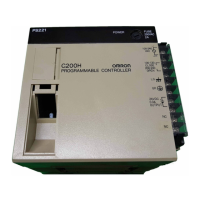
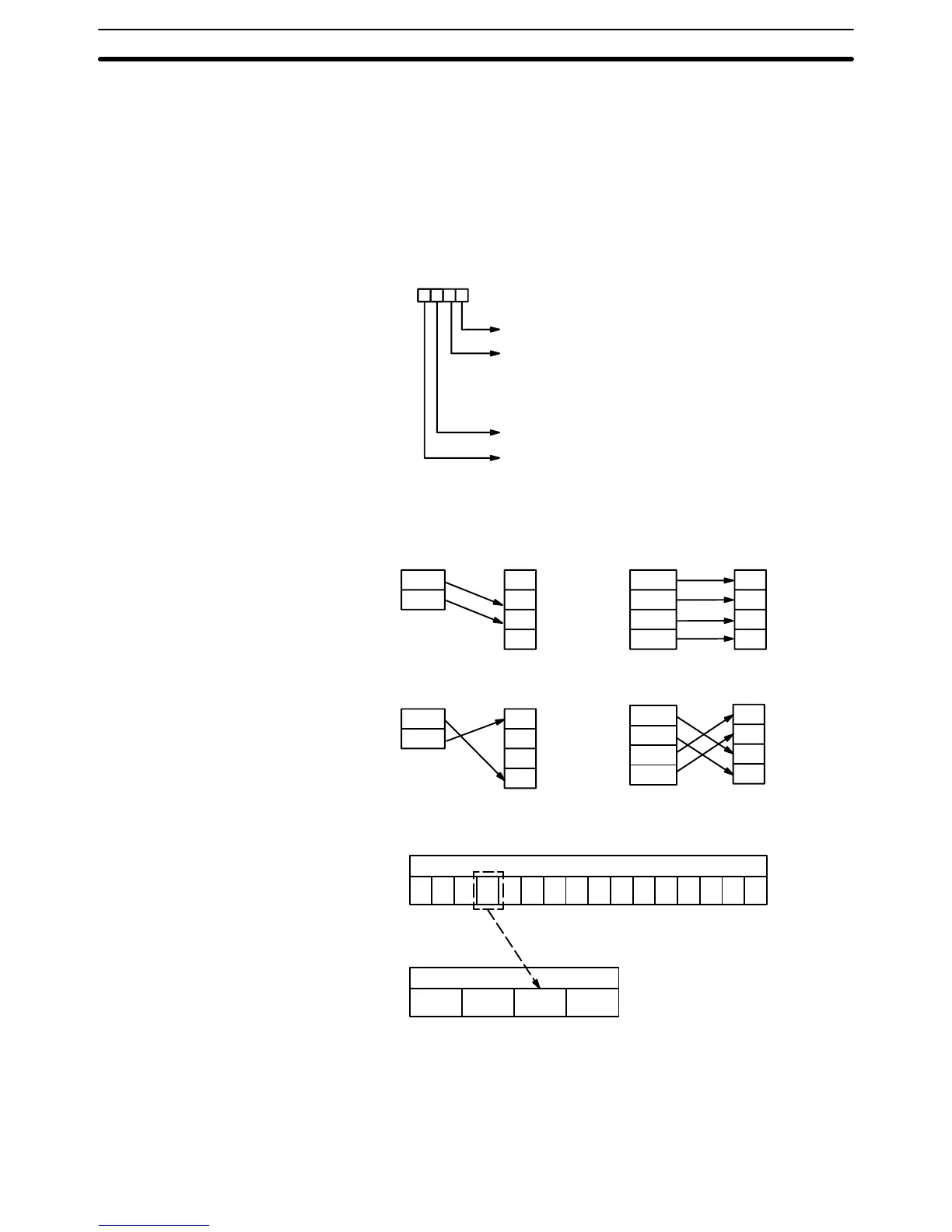